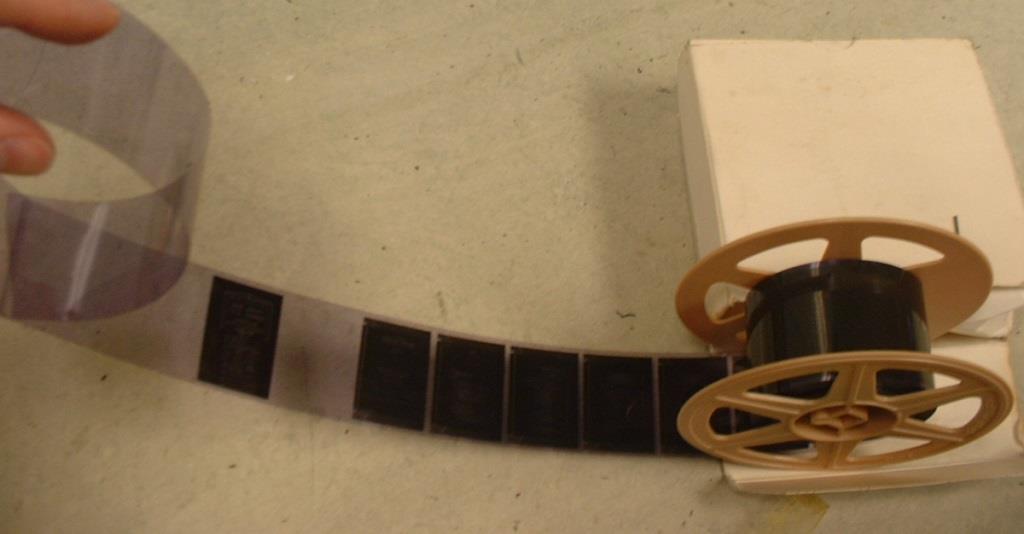Digging up information on the activities of World War II secret services is challenging because… well… a lot of the documents were/are secret!
The British MI5 files have been slowly released to the public domain over the last 15 years, which has been extremely helpful in researching the German spies, including Josef Jakobs.
But what about the files of MI5’s German counterpart – the German Intelligence Service a.k.a. Nachrichtendienst a.k.a The Abwehr?
Good question. The answers range from: files were destroyed by Abwehr staff as the Allies invaded; files were destroyed through Allies bombing; files have gone missing; files are buried in the German Military Archives; files are buried in the National Archives in Washington DC. It’s enough to give researchers pounding headaches.
Let’s start near the beginning… or at least… a beginning. Back in 1971/72, three books were published about World War II espionage activities: one by one by a German, one by a Briton and one by an Hungarian-American.
Nikolaus Ritter, former spymaster at the Abwehr Ast X offices in Hamburg, wrote his memoirs in German under the title “Deckname Dr. Rantzau”.
J.C. Masterman, Oxford don and former chairman of MI5’s Twenty Committee (XX or Double-Cross), published the Double-Cross System exposing, for the first time, Britain’s triumph over German espionage during World War 2.
Ladislas Farago, former US Naval Intelligence officer, beat the others to the punch by publishing his Game of Foxes in 1971. It was hugely popular but… serious questions were raised about its scholarship. Farago claimed to have uncovered a treasure trove of original Abwehr documents on microfilm… Let’s look at what Farago has to say about his stunning find (from the introduction to his book):
For over ten years I had been gathering material for a book about the Abwehr, the German secret service under Admiral Wilhelm Canaris. But the problem of unraveling the super-secret activities of this organization, whose records presumably had been destroyed at the end of the war and were forever lost to history, seemed well-night insurmountable. Then in 1967, in a dark loft of the National Archives in Washington, D.C., I stumbled over a metal footlocker, the kind American naval officers used in World War II. It held hundreds of little yellow boxes containing rolls of microfilm, and it turned out to be part of the litter of recent German history the Allies had captured in 1945.
It was obvious from the dust on the boxes and the seals on the old metal rolls that they had never been opened for inspection, not even by the remarkable team of researchers of the American Historical Association who had catalogued literally millions of other captured enemy papers. The collection was as raw as it must have been when originally found in Bremen by American intelligence officers headed, as the name on the footlocker indicated, by Captain L.S. Vickers, USN.
Guided by Dr. Robert Wolfe and Richard Bauer, the dedicated custodians of the captured German records, I made a sampling of the films and realized immediately that I had come upon an extraordinary find. Dozens of the rolls, with about a thousand frames in each, contained the papers of the Hamburg and Bremen outposts of the Abwehr, the two branches of the German senior military intelligence agency that specialized in the clandestine coverage of Britain and the United States.
For years I had tried to uncover primary documentation of the Abwehr’s personnel and activities, but was told categorically and honestly by the authorities in Washington and London that the vast bulk of the Abwehr papers had been destroyed by their original custodians to save them from captured by the Allies. Yet now I had before me a very substantial part of those very records.
For the first time the Abwehr was bared as it really was, not as its apologists and detractors offered it for public view. From these films emerged the accounts of some operations already known, but in an entirely new light. Innumerable secret transactions that might have been buried forever were now revealed involving well-known American and British personalities.
The profiles of Germany’s espionage executives now suddenly appeared in sharp focus, together with detailed biographies and photographs of long-forgotten agents. There were the voluminous fiscal records with all the painstaking bookkeeping insisted upon by Herr Toepken, the Abwehr’s meticulous and tight-fisted paymaster.
In all the vast literature of espionage never before was the secret service of a major power presented as comprehensively and authoritatively, certainly not from the firsthand evidence of its own records.
…
Over a thousand of these rolls of microfilm with more than a million pages of documents have been examined and used in the preparation of this book. In addition, thirty-four “uncatalogued” films have also been inspected, yielding vast source material never before used in research.
Oooh… “detailed biographies and photographs of long-forgotten agents”. There must be something on Josef Jakobs in there! Sounds pretty impressive! He drops the names of Robert Wolfe and Richard Bauer who were indeed involved in curating the captured German documents collection. Sounds legit, yes? Except… Game of the Foxes had minimal footnotes, none of which cited original sources. Zero. Nada. Zippo. Extremely poor scholarship which leaves us wondering… what is fact and what is fiction?
You see, many, many researchers have tried to track down the “mother lode” of original Abwehr documents that Farago claimed to have “discovered”. So far, the treasure trove has eluded researchers which begs the question, where are the files? Do they even exist?
In his bibliography, Farago lists the following as a source:
Abwehr: Ast X (Hamburg) and Nest Bremen, ML-Series, microfilm rolls in the author’s collection.
Perplexing to say the least. Abwehr microfilm in Farago’s collection? I thought these microfilm were from the National Archives? Did he have them copied for his own use? Very mysterious.
I did a bit of digging and here’s what I’ve found.
National Archives – Washington DC
The obvious starting point. The National Archives has a massive collection of captured German documents on microfilm. Everything from documents of the German Foreign Office to the Navy to the SS. A cursory glance doesn’t seem to have anything Abwehr-related. The microfilms all seem to belong to the M-series or T-series. None of them are “ML-series” as referenced by Farago above.
Library of Congress – Washington DC
The Library of Congress also a German Captured Documents Collection (opens as a pdf). This collection consists of material captured by American military forces in Germany after World War II. In 1992 the Library agreed to return all captured German material in the Manuscript Division that the Bundesarchiv of the Federal Republic of Germany wanted for its holdings or for transfer to other German archives. German archivists identified the material to be returned and underwrote the cost of filming by the Library’s Photoduplication Service.
Search through the catalogue for this collection and you’ll find one reference for the Abwehr:
Box 151 (Formerly 328) Reel 70</i><br><i>Ausland-Abwehr, Abteilung Ausland III – Regulations re: strength of units and lists of Abwehrstellen in Germany by Wehrkreis and in all of Europe, 1942-1944
That’s it. One box with Abwehr records. Not promising.
A more promising lead takes us to to the city of Boston. Apparently, after Farago passed away in the 1980s, all of his research material was passed along to Boston University.
Howard Gotlieb Archival Research Centre – Boston MA
The Ladislas Farago collection consists of manuscripts, research files, audio, printed material, correspondence, photographs, and other items. The collection description (see link above) even notes that there are audio files (reel-to-reel) of interviews with Nikolaus Ritter. That sounds rather interesting. But what about the Abwehr files? Well… the collection description has this to say:
Please note that Farago’s large collection of microfilmed documents, 239 rolls total taken from the U.S. National Archives series “World War II Collection of Sealed Enemy Records” and 5 rolls relating to the Japanese military in World War II, is accessible in the microforms area of the Mugar Memorial Library. Please refer to the catalog.
Right… off to another library…
Mugar Memorial Library – Boston MA
When I came across this information (back in 2012), I wrote an email to the library and asked about the microfilms… The archivist who replied had this to say:
The 239 microfilm rolls were part of Ladislas Farago’s personal library and are microfilms of original documents from the National Archives. If you wish to see the microfilms that are part of the Ladislas Farago Collection here at Boston University, they are available for viewing at the Microfilms section of Mugar Memorial Library under the call number D735 F581 listed in the online catalogue system as “National Archives Microfilm Publications”.
Well now, that sounds rather promising. Follow the trail to Mugar and that call number and you’ll find a list of the following microfilm holdings:
M35, M38, M39, M77, M18, M247, M679, M975
T77, T78, T81, T84, T120, T149, T175, T322, T608
Each series has multiple rolls of microfilm, presumably adding up to 239 rolls of film. Alas, none of them have Farago’s ML-series prefix. But… they would definitely be worth a look, if one had the time and the resources. One thousand pages on 239 films = 239,000 images to review. Mind you, the notes to the collection state:
Contains microfilm editions of records of Federal agencies held in the National Archives.
Mugar Library’s set is composed primarily of German documents seized during World War II. A guide to the entire collection is provided by: Catalog of National Archives microfilm publications. The majority of Mugar Library’s set is also described in detail in: Guides to German records microfilmed at Alexandria, Va.
So… perhaps nothing new here after all… Although, I haven’t found any M-series microfilms listed in the National Archives listing of captured German documents.
Bundesarchiv Military Archives (BA-MA) – Freiburg GER
Well then, what about the German Archives? Over the last few years, I’ve heard about the Military Archives in Freiburg. The archives sounded rather promising so I put out some feelers with my intelligence contacts. I learned that researching at Freiburg requires a lot of time and money and ideally, you would need to hire a local specialist researcher.
Abwehr Files Still Lost
Sooo… back to Square One. Best bet at this point would seem to be Boston University and the Farago Collection. Even just the audio tape interviews with Ritter would be well worth a visit. Whether the microfilm collection is the pot of gold at the end of the rainbow is another matter.
Header image “Microfilm” by Deborah Fitchett is licensed under CC BY 2.0


I've been searching for these files too!
THe National Archives London may have some under KV3/205 – but one must be in London to view them.
Anther researcher found them in the 1980s – presumably at the national archive and listed several of the ML-series and their contents – for instance, agent biographic summaries were on ML 202 and 203.
I had a look at KV 3/205 at Kew in 2014 – it wasn't anything earth shattering. Definitely not the Hamburg files.
Where oh where are they…